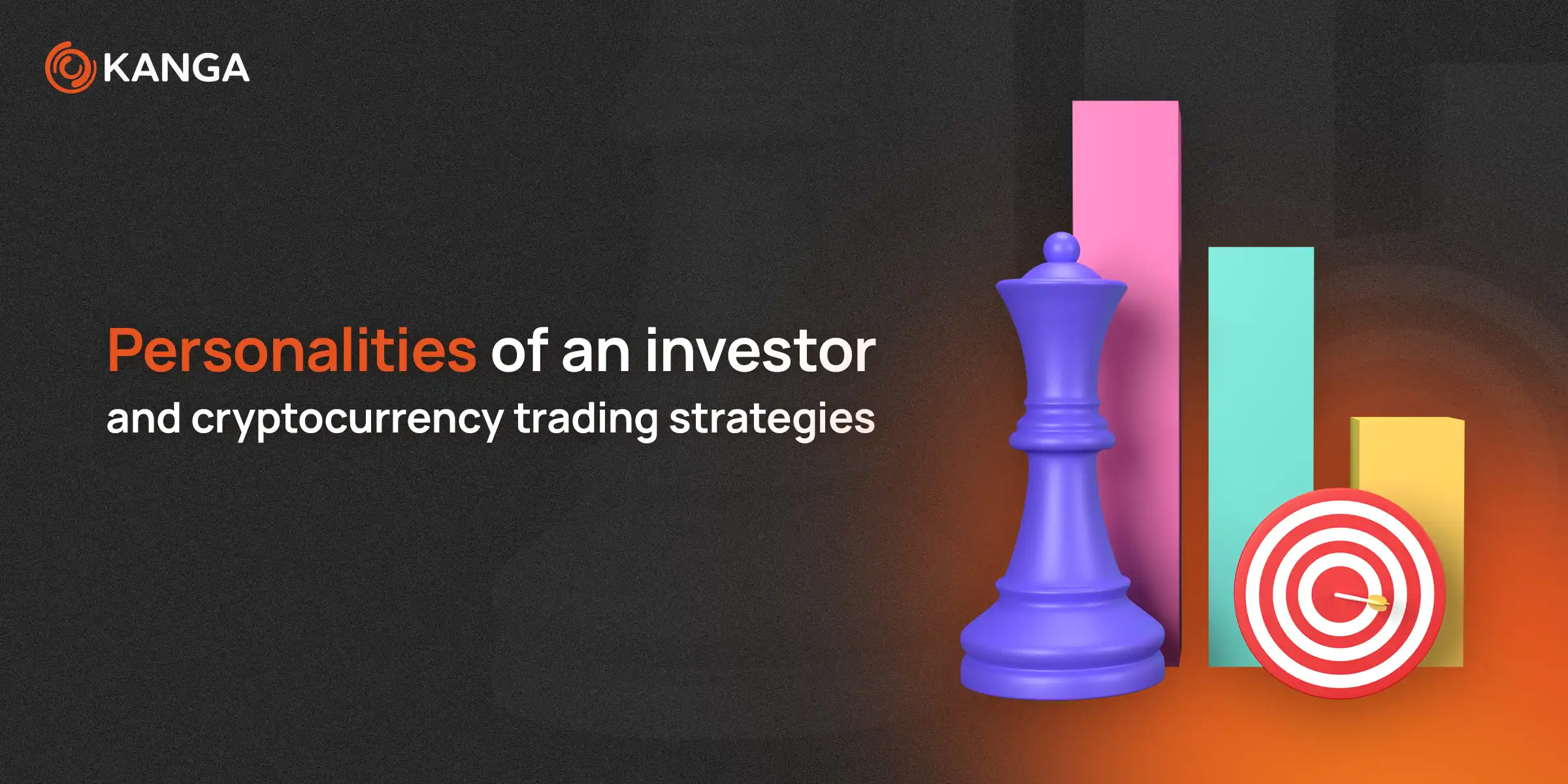How different personality traits influence decision-making and risk management?

Written by
Kanga
Published on
In the world of cryptocurrency, where price fluctuations can be rapid and market trends difficult to predict, the role of an investor’s personality can be a significant factor. Are you a bold risk-taker or a cautious strategist? Personality traits directly impact how you make decisions and manage risk in the cryptocurrency market.
Boldness in risk-taking
Investors with a high level of boldness in risk-taking often opt for paths that may seem as promising as they are perilous. They tend to favor aggressive investment strategies fueled by the belief that higher risk is inherently tied to the potential for higher returns. These investors may, for example, engage in leveraged trading, borrowing capital for investments in hopes of the cryptocurrency’s value appreciation.
An interesting example of boldness in risk-taking is investing in new, lesser-known cryptocurrency projects that may exhibit significant growth potential. Early investments in projects such as Ethereum or Binance Coin, when they were still in their infancy, yielded bold investors returns measured in thousands of percent. However, behind every such success lies many other projects that did not withstand the test of time, underscoring the market’s volatility and unpredictability.
For risk-taking investors, effective risk management is a crucial aspect of their strategy. This involves not only diversifying the investment portfolio but also adhering to principles such as setting stop-loss orders, which allow for limiting losses in case of sudden price drops.
An interesting strategy for bold investors is also “contrarian investing,” or investing against the general market trend. These investors seek opportunities where others see only a decline in value, buying when there’s pessimism and selling during general optimism. Though risky, such a strategy can yield high profits if the investor accurately assesses future market changes.
Patience and long-term planning
Investors with patience and a penchant for long-term planning, such as the renowned Warren Buffet (although not with cryptocurrencies), typically achieve success through careful selection of projects with potentially high growth in value. An example of such an approach in the world of cryptocurrencies is investing in Bitcoin early in its existence. When the price of a single coin was just a few cents, investors who exercised patience by holding onto their Bitcoin for years before it reached prices in the thousands of dollars are often held up as role models.
An important aspect of such an approach is also deep fundamental analysis. Investors like Chris Burniske, co-author of the book “Cryptoassets: The Innovative Investor’s Guide to Bitcoin and Beyond,” emphasize the significance of understanding the fundamental value of cryptocurrency projects, their applications, development teams, as well as the overall demand for the token before making an investment.
Analytical approach to decision-making
Investors with an analytical approach, such as PlanB, the creator of the popular stock-to-flow (S2F) model for Bitcoin, utilize advanced technical and fundamental analysis tools to precisely forecast price movements. The S2F model, which relies on the amount of available Bitcoin relative to newly mined coins, has been used to predict significant increases in Bitcoin’s price, providing data-driven market forecasts to investors.
Analytical investors, such as those who use on-chain analysis tools to assess the health of blockchain networks, such as the number of active addresses or transfers, can accurately gauge when the market may be undervalued or overvalued.
Flexibility and adaptation
Investors who can adapt their strategies to changing market and technological innovation conditions often find themselves one step ahead of others. An example of such flexibility is the rapid adoption by investors of the DeFi (Decentralized Finance) trend in 2020, leading to an explosion of interest in platforms enabling lending, borrowing, and even portfolio management without intermediaries. Investors who recognized the potential of DeFi early on could benefit from significant increases in the value of tokens associated with these projects. For example, the YFI (Yearn.finance) token rose from an initial price of around $1,000 to over $40,000 within a few months.
Another area highlighting the importance of flexibility is NFTs (Non-Fungible Tokens), which gained popularity in 2021. NFTs enabled digital ownership of unique items and artworks, opening entirely new possibilities for both creators and investors. Instances such as the sale of digital artwork by Beeple for $69 million precisely demonstrate the potential inherent in this market segment.
Additionally, investors who are flexible and open to technological innovations have begun exploring opportunities related to the metaverse, virtual worlds where users can buy properties, participate in events, and create interactive experiences. Projects such as Decentraland and The Sandbox gained value as investors recognized the potential of this new form of digital assets.
Investors who can flexibly manage their portfolios, leveraging the latest innovations and technologies, not only maximize their profits but also reduce risk by diversifying their investments across various segments of the digital market.
Conclusion
Each investor, with their personal set of traits and strategies, brings something unique to this world, shaping their own financial odyssey. It’s not only cold calculations that determine our success but also our characters. From bold adventurers unafraid of risk to patient guardians of dreams who believe in a long-term vision, each of us has the chance to find our path in this digital labyrinth.
The ability to sense when it’s time to change course to follow new trends or technologies can make the difference between achieving a goal and getting stuck in the shallows. So, whether you’re an investor tracking every market move or someone who prefers long-term planning, remember that flexibility and the ability to adapt quickly may prove to be your most valuable allies.